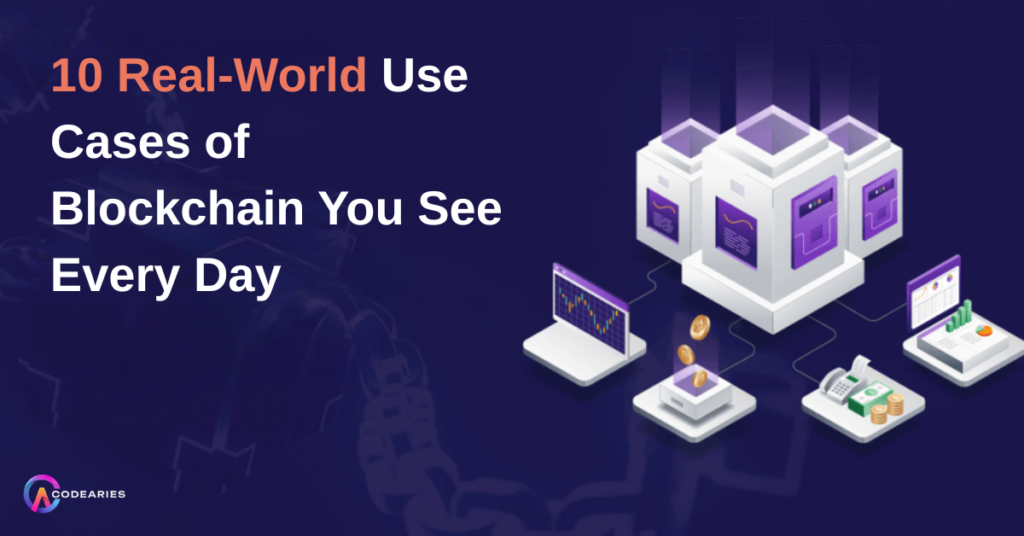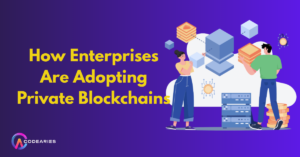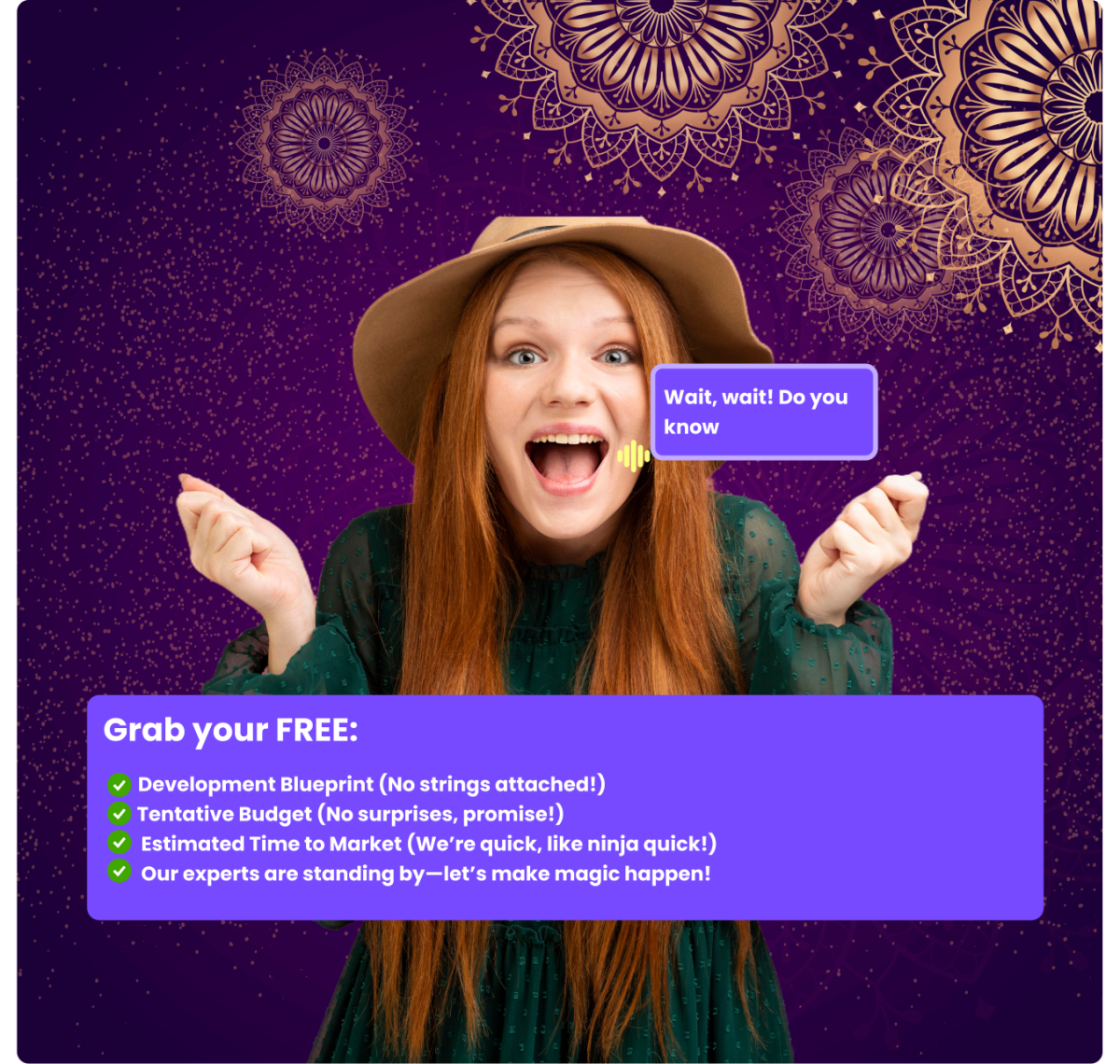When you hear the word blockchain, you might think of Bitcoin, Ethereum, or NFTs. However, blockchain has grown beyond cryptocurrency. It’s not just about coins; it’s quietly changing industries you encounter every day.
From the food you eat to the apps you use to vote, blockchain works behind the scenes, bringing transparency, security, and efficiency to daily life.
Let’s explore 10 real-world blockchain applications you’ve likely encountered—even if you didn’t notice it.
1. Food Safety & Supply Chain Transparency
Where You See It: Grocery stores, food delivery, product QR codes.
How it Works:
Blockchain records each step of a product’s supply chain, from farm to fork. This helps consumers and retailers trace the origin, storage, and journey of food products in real-time.
Real-World Example:
Walmart and IBM Food Trust reduced recall time from 7 days to seconds. Nestlé, Carrefour, and Unilever use blockchain for supply chain traceability.
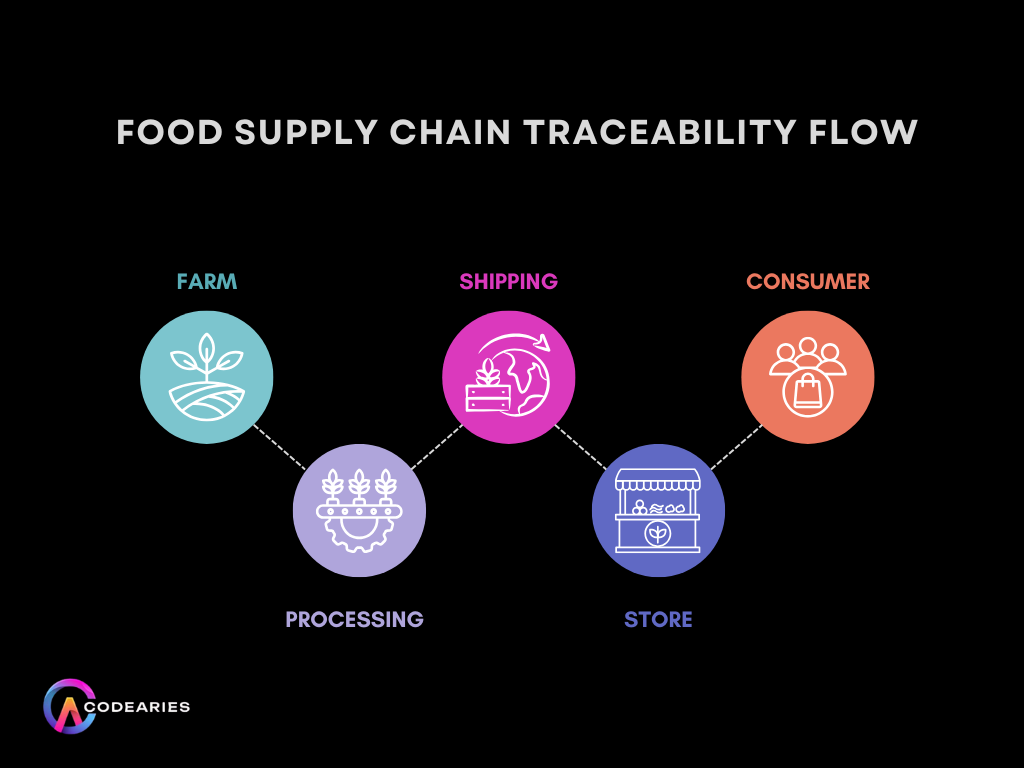
2. Digital Identity & KYC Verification
Where You See It: Bank apps, airline check-ins, online platforms.
How it Works:
Blockchains support Self-Sovereign Identity (SSI), allowing users to control and share their identity securely without storing personal data on centralized servers.
Real-World Example:
Microsoft ION is a decentralized ID platform built on Bitcoin. Civic and uPort are used in finance, healthcare, and border control.
3. Cross-Border Payments & Remittances
Where You See It: Sending or receiving money, gig platforms, freelancer payments.
How it Works:
Blockchain lowers fees and delays by removing intermediaries in international transactions.
Real-World Example:
RippleNet (XRP), Stellar, and USDC are used by MoneyGram and Western Union. Wise and PayPal now use blockchain for faster settlements.
4. Healthcare Data Management
Where You See It: Medical records, EMR apps, prescriptions.
How it Works:
Patients store their health records in a digital wallet. Medical providers access this data through encrypted, permissioned smart contracts.
Real-World Example:
MediLedger tracks drug authenticity. BurstIQ and Healthereum leverage blockchain for patient data control.
5. Secure Online Voting
Where You See It: Shareholder votes, university elections, expat ballots.
How it Works:
Blockchain ensures permanent and auditable voting logs, which improves trust and transparency in digital elections.
Real-World Example:
Estonia uses blockchain to support national IDs and digital voting. Voatz is used in U.S. elections for secure absentee voting.
6. Real Estate & Land Registry
Where You See It: Property transactions, rental contracts, title deeds.
How it Works:
Blockchain digitizes title records and uses smart contracts to streamline property sales, rent agreements, and verification.
Real-World Example:
Propy facilitates blockchain-based home transactions. Pilot programs are underway in Sweden, Georgia, and India for digital land records.
7. Digital Content & NFTs
Where You See It: Music platforms, digital art, in-game items.
How it Works:
Creators issue NFTs to confirm ownership of digital content and earn royalties transparently.
Real-World Example:
Audius streams music on blockchain. OpenSea, Rarible, and Magic Eden are used by millions to trade NFTs daily.
8. Loyalty Programs & Rewards
Where You See It: Shopping apps, airline miles, cafe rewards.
How it Works:
Tokens on blockchain replace isolated point systems, offering users real-time rewards that can be used across multiple vendors.
Real-World Example:
Singapore Airlines’ KrisFlyer integrates blockchain with partner outlets. Chanticleer Holdings used blockchain for cross-brand restaurant rewards.
9. Ethical Product Sourcing & Fashion
Where You See It: Product labels, smart tags, sustainable goods.
How it Works:
Blockchain tracks every phase in the product lifecycle, allowing consumers to verify that labor, materials, and logistics are ethical and eco-friendly.
Real-World Example:
Everledger tracks diamonds to confirm they’re conflict-free. The Aura Blockchain Consortium includes LVMH, Prada, and Cartier to verify product authenticity.
10. Transparent Donations & Charity
Where You See It: Nonprofits, disaster relief, giving apps.
How it Works:
Blockchain ensures donations are delivered and used transparently, reducing fraud and increasing donor trust.
Real-World Example:
Binance Charity and GiveTrack show real-time donation tracking.
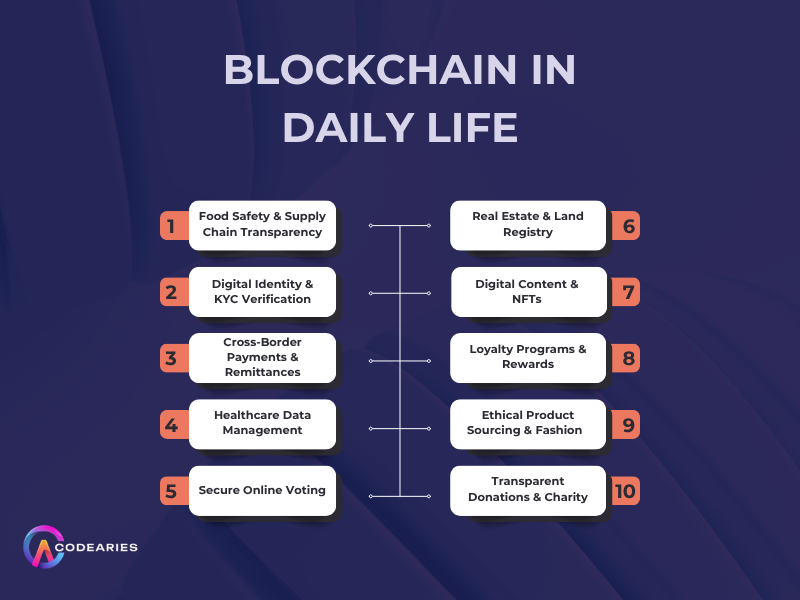
How Codearies Can Help You Build Real-World Blockchain Solutions
At Codearies, we turn blockchain from a buzzword into a business advantage.
From traceability in supply chains to decentralized identities, tokenized loyalty systems, or payment automation, our engineering, strategy, and compliance teams make it happen.
Our Expertise Covers:
Blockchain Consulting & Strategy
We link real business challenges to scalable blockchain solutions.
DeFi & Wallet Development
Build next-generation fintech platforms with crypto wallets, payments, and smart contract integration
Track & Trace Systems
Using blockchain and IoT to verify product origin, ensure sustainability, and enable digital twins.
NFT Marketplaces & Content Platforms
Create tokenized IP platforms for art, fashion, music, and gaming with built-in royalty smart contracts.
Custom Loyalty & Reward Systems
Cross-brand point wallets powered by smart tokens that work across partnerships.
Digital ID and KYC Solutions
Self-sovereign identity and KYC modules for finance, healthcare, and public services.
No matter the use case, Codearies offers the blockchain design, development, and ongoing support to bring your idea to life.
Explore or build with us: https://codearies.com/
Frequently Asked Questions (FAQs)
Is blockchain practical for everyday business use?
Yes. Blockchain has moved beyond proof-of-concept. Codearies builds real-world blockchain systems across retail, fintech, logistics, and media used by thousands every day.
Can we integrate blockchain into existing apps?
Absolutely. We specialize in adding blockchain features—such as traceability, NFT minting, and wallets—to mobile and web platforms without disrupting your current setup.
How is blockchain better than a traditional database?
It stores permanent, verifiable, and decentralized records, which is perfect for situations needing transparency, shared access, or tamper-proof logs.
Do users need technical knowledge to engage with blockchain apps?
Not with Codearies solutions. We design simple, mobile-friendly user interfaces that hide the complexity behind secure wallets and wallets-as-a-service APIs.
How long does it take to launch a blockchain product?
Depending on the scope, MVPs can be delivered within 6 to 12 weeks, with plans for ongoing features, security audits, and governance.

